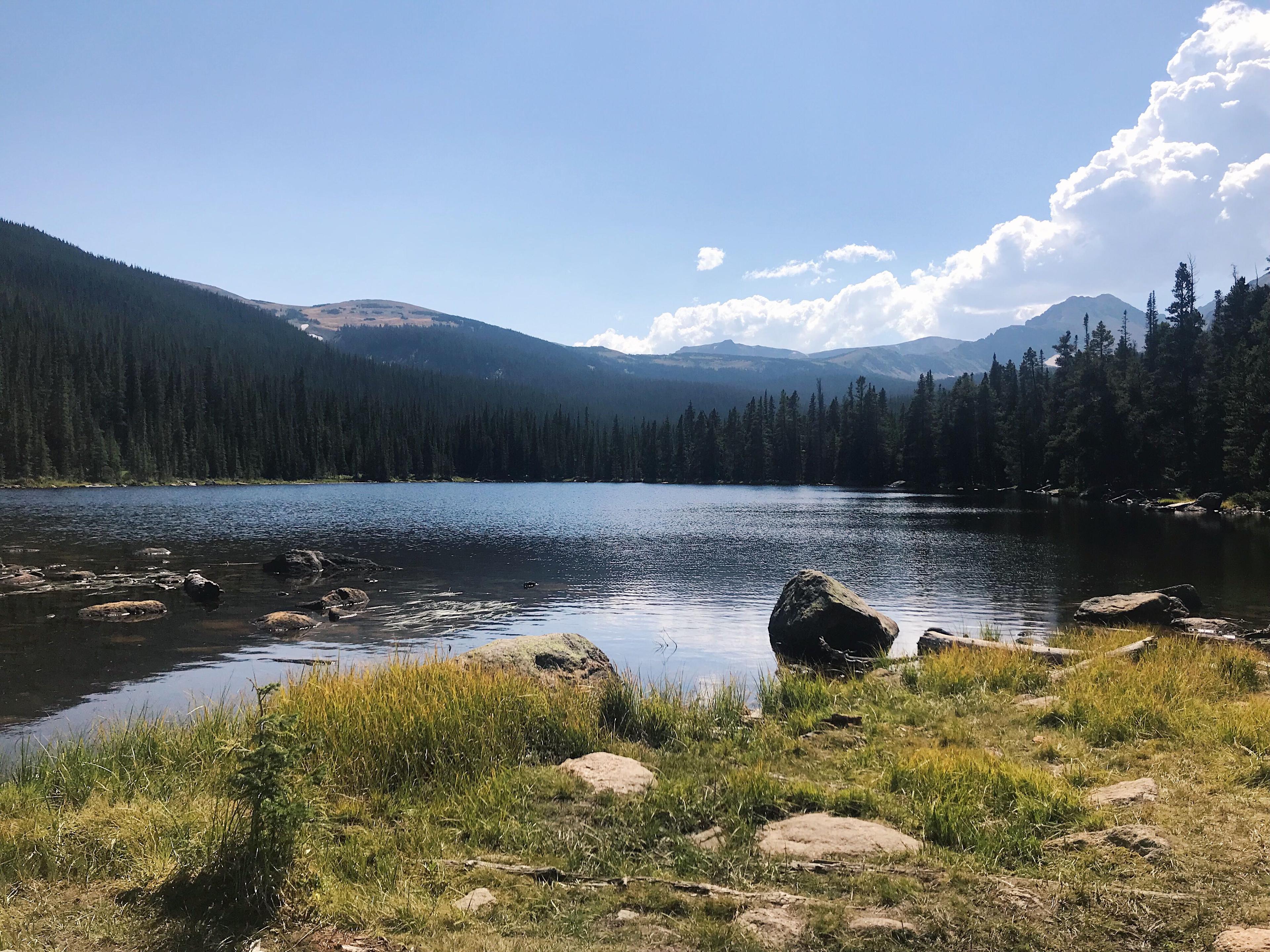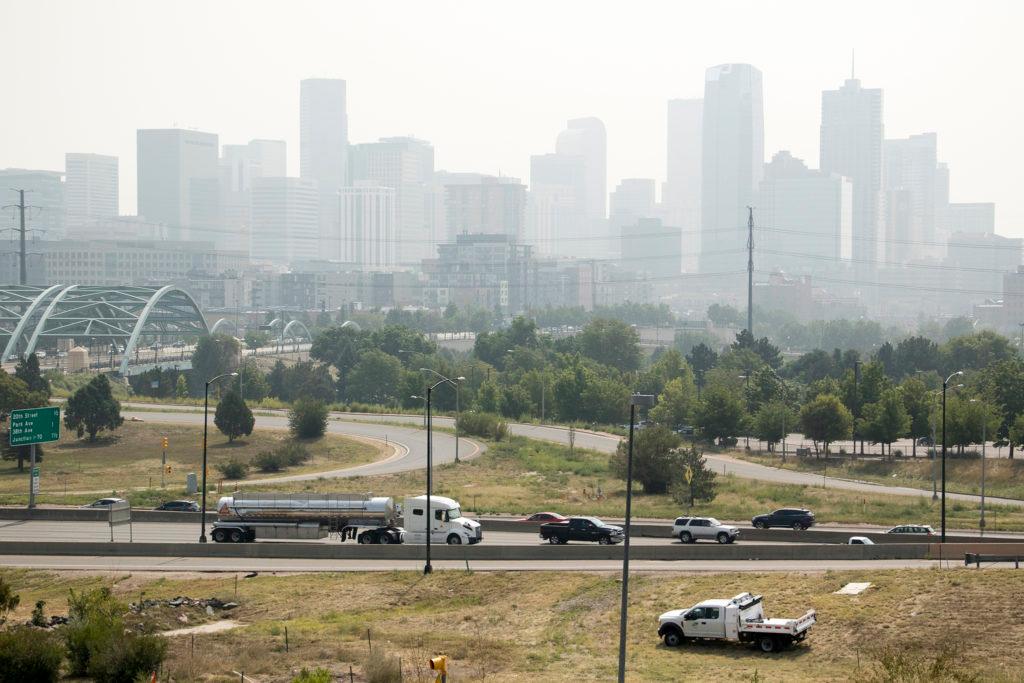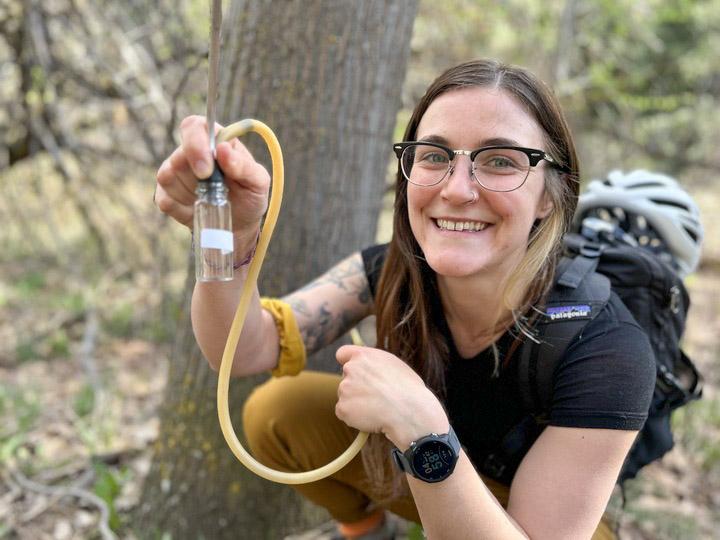
State environmental agencies are consulting a new digital mapping tool designed to identify vulnerable communities when issuing permits, approving projects and awarding grant money.
Colorado EnviroScreen was released in June 2022 and was designed to help address decades-long environmental injustices. The tool is intended to shift how state and local governments allocate funding and approach environmental policy and is built around an online mapping program that shows which communities in Colorado have a greater risk of public health impacts based on exposure to various environmental hazards.
During its first full year in use, Colorado Department of Public Health and Environment officials have instructed state agencies to use the EnviroScreen to identify communities that are disproportionately affected by air pollution, dirty waterways and proximity to noisy and high-traffic roadways — as well as Coloradans who could be impacted by industrial activities like fracking and mining.
But despite receiving praise from environmental advocates for undertaking long-neglected environmental justice concerns, EnviroScreen has faced a rocky rollout among some users who say they are confused and frustrated by the tool's intended purpose and audience — and are unclear how it has bolstered the state’s environmental justice goals.
Designed around disparities
EnviroScreen is designed to identify communities that fall under the state’s definition of Disproportionately Impacted Communities and is based on the state’s previous mapping tool, known as the Climate Equity Data Viewer.
The tool was created through the Environmental Justice Act, which Gov. Jared Polis signed into law in 2021. The legislation recognized a need to address environmental disparities across the state and empowered a new Environmental Justice Action Task Force to oversee the effort.
The panel of nearly two dozen experts, advocates and community and industry representatives oversaw the development of EnviroScreen, which was built by David Rojas, an environmental epidemiologist and professor at Colorado State University.
Rojas said the tool is based on three pillars: equity, health and environment. It took a year for Rojas’ team to EnviroScreen, which included updates based on feedback from interviews and meetings with communities across the state, as well as government agencies, regulated industries, and health, environmental justice and advocacy groups.
“It's not only a website that has a lot of data inside, but we also incorporated a lot of community engagement feedback since the beginning,” Rojas said. “It was a more interactive process. We were going back and forth with different community representatives and stakeholders to identify what the perspective of this type of tool should look like for the state of Colorado.”
The result is an interactive online map that combines population and environmental factors to calculate a 0 to 100 score that measures how impacted a particular community is to environmental injustices. If a census block receives an EnviroScreen score of 80 or higher, it meets the state’s definition of a disproportionately impacted community.
How the tool is being used
According to the state’s health and environment department, since EnviroScreen’s rollout in June 2022, the score has been used to allocate funding, resources and help agency staffers when they make regulatory decisions on things like permits.
Officials with several regulatory authorities, including the Public Utility Commission, the Air Pollution Control Division and the the Energy and Carbon Management Commission, said they have incorporated EnviroScreen in their permitting review processes.
Colorado’s Environmental Justice Advisory Board — which is separate from the task force — and made up of 12 members from different regions around the state has used EnviroScreen to award $1 million to fund eight community projects, including providing resources to agricultural workers affected by poor air quality, initiating a tree planting project in Aurora, and creating a climate action plan for the Latino/a/x population of Eagle County.
The board selected the eight awardees out of 27 total applicants. To be eligible for funding, each applicant had to demonstrate that the project location or the applicant’s address is located in a disproportionately impacted community using the EnviroScreen scores. However, the board did not use EnviroScreen scores when it selected projects or when determining final funding amounts.
“It is our understanding that Enviroscreen is not an instrument to deny or approve permits but to help make better, more informed decisions in agency actions and outreach,” said Chris Arend, Communications Director for the Department of Natural Resources.
Questions and pushback
EnviroScreen’s debut and its adoption by state regulators have raised questions and concerns among lawmakers, industry groups and local government officials.
“Once we heard this tool was available, we started looking at it and just by clicking around and looking at some maps, it was clear that there was something off,” said Annareli Morales, the environmental health specialist for Weld County, the state’s top oil-producing county.
Earlier this year, officials in Weld County issued an 80-page report that detailed a long list of problems with EnviroScreen and its underlying data. The analysis, generated by a consultant through a $32,000 contract with the county, concluded that 23 of the 35 datasets that EnviroScreen used were of “questionable quality” and relied on data that was inaccurate, outdated or improperly used. The report recommended ways to fix the data problems and improve the tool.
“It's a big deal,” Morales said. “EnviroScreen has immediate regulatory impacts and impacts to the community.”
Other officials have raised alarms about EnviroScreen potential impact and questioned the tool’s effectiveness. A few months after the Weld County report was released, State Rep. Gabe Evans, a R-Fort Lupton, who is running for Congress, called for a legislative audit.
“This tool is being used to allocate millions of dollars of government resources. This tool is being used in rule-makings by regulatory agencies,” Evans said. “So, if this tool is going to have that much impact, then I want to make sure that we have a good tool that's got decision grade information.”
In August, the legislative committee declined to conduct an audit of EnviroScreen. State Rep. Andrew Boesenecker, D-Fort Collins, the committee’s chair, said the audit wasn’t worthwhile since the task force was already preparing to release an updated version of the tool.
Evans said he is worried that EnviroScreen could be directing funding and resources to the wrong communities and was frustrated by the decision. “If version 1.0 is good enough to be deployed and actually be used to allocate millions of dollars of resources, it seems like it also ought to be good enough to be audited,” he said.
No state agencies contacted by CPR News reported denying any permits or canceling proposed projects based on EnviroScreen scores or data obtained through the tool. Still, some individuals and groups say they are confused about the tool’s purpose and who is intended to use it.
The Colorado Oil and Gas Association was one of the industry groups the Environmental Justice Task Force consulted when it was developing EnviroScreen. A few months after the tool was debuted, the association sent a letter to the state identifying its concerns, including outdated census figures and poor data quality.
While EnviroScreen is being used by regulators who oversee and issue permits for oil and gas operations, Dan Haley, the association’s president and CEO, said he hasn’t heard reports that the tool has been a deciding factor in denying permits or changing the scope of approved projects — but the state’s Energy and Carbon Management Commission has included more requirements for permits after consulting the tool.
“Our thought process around enviroscreen is that it be used as a screening tool and not used to enforce policy,” Haley said. “I think there's been some discrepancy in what was said in state rulemakings … and how it might potentially be used.”
Representatives from the American Petroleum Institute, another oil industry trade group, said EnviroScreen should be used as an evaluation and communication tool.
“I think the intent of the tool is to give us a guide about who we should be communicating with and how, so that we can have better stakeholder relations with the community,” said Kait Schwartz, Director of the group’s institute’s Colorado branch.

Updates and improvements planned
In August, the Department of Public Health and Environment responded with a letter that addressed the criticisms detailed in Weld County's report, saying they appreciated the feedback but were confident in the tool's ability to identify communities with disproportionate environmental burdens.
Colorado’s Environmental Justice Task Force and Rojas, the Colorado State University professor who designed EnviroScreen, have made updates and are preparing to release a new version of the tool in 2024. Some of the updates include improvements based on feedback from Weld County, officials with the state health and environment agency said.
Other EnviroScreen users hope the updated version of the tool will include other improvements and that state health and environment officials will clarify how it should be used.
Renee Millard-Chacon, who is a member of Colorado’s Environmental Justice Action Task Force and the co-founder and executive director of the social justice organization Womxn from the Mountain, said she has not seen a change in her community since EnviroScreen was released. She attributes much of that to the tool being new and having relatively few regular users.
“EnviroScreen is not brought in as often as it should be in a lot of spaces,” Millard-Chacon said. “And we're still — even though it's over a year — we're still having to educate that it's even a tool at all.”
- Denver has a new climate boss. Here’s her plan for an electrified and sustainable city — and how she’s cutting her own carbon footprint
- New federal grants will help Colorado groups address environmental injustices across the state
- As insects flee warming for higher ground, new Colorado research shows the ones with wings struggle to make the escape






